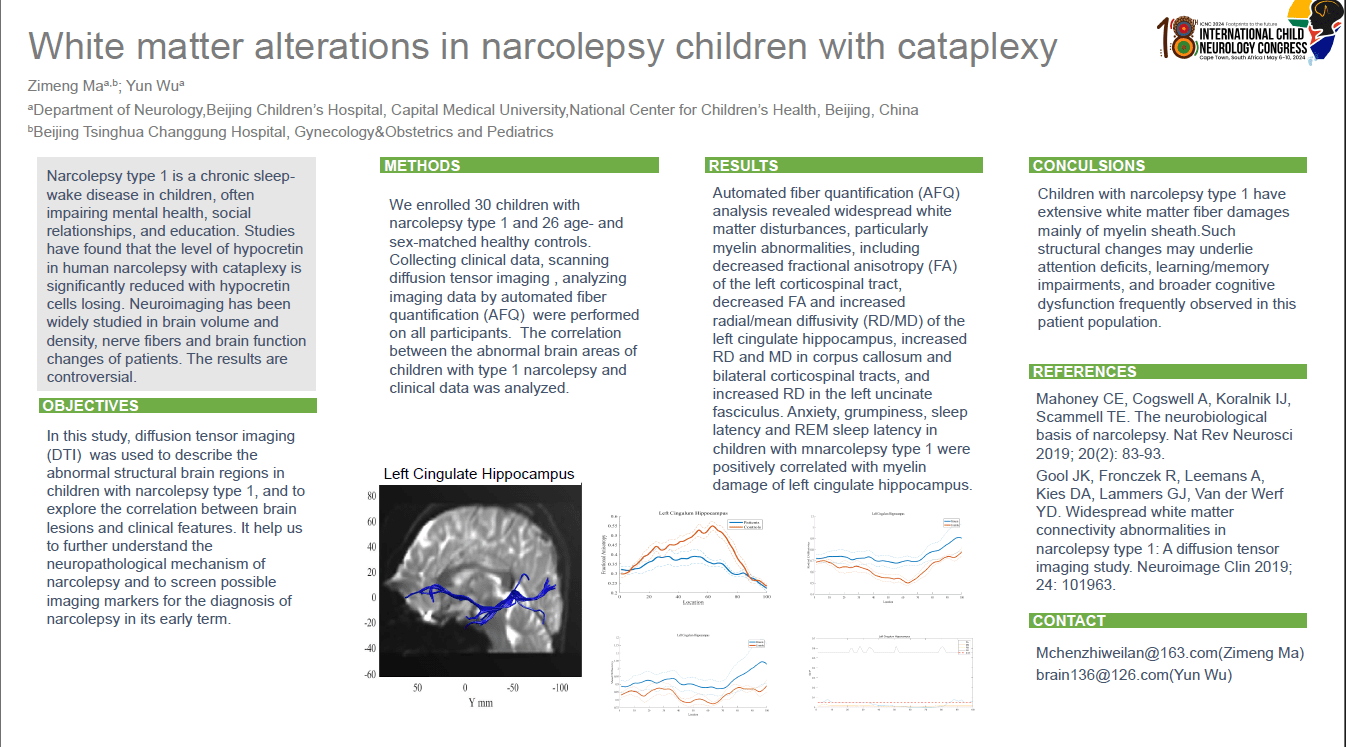White Matter Alterations In Narcolepsy Children With Cataplexy
Narcolepsy type 1 is a chronic sleep-wake disease in children, often impairing mental health, social relationships, and education. We enrolled 30 children with narcolepsy type 1 and 26 age- and sex-matched healthy controls. Clinical data were collected, and diffusion tensor imaging (DTI) was performed for all subjects to characterize abnormal brain regions in pediatric narcolepsy type 1. Automated fiber quantification (AFQ) analysis revealed widespread white matter disturbances, particularly myelin abnormalities, including decreased fractional anisotropy (FA) of the left corticospinal tract, decreased FA and increased radial/mean diffusivity (RD/MD) of the left cingulate hippocampus, increased RD and MD in corpus callosum and bilateral corticospinal tracts, and increased RD in the left uncinate fasciculus. Anxiety, grumpiness, sleep latency and REM sleep latency in children with narcolepsy type 1 were positively correlated with myelin damage of left cingulate hippocampus. These data demonstrate extensive white matter injury in pediatric narcolepsy type 1, primarily affecting myelin. Such structural changes may underlie attention deficits, learning/memory impairments, and broader cognitive dysfunction frequently observed in this patient population. This work was supported by the Research Cultivation Plan of Beijing Municipal Hospital (Grant No. PX2017065)
Zimeng Ma
Beijing Children’s Hospital, Capital Medical University, National Center for Children’s Health, Beijing, China;Beijing Tsinghua Changgung Hospital
China
Yun Wu
Beijing Children’s Hospital, Capital Medical University, National Center for Children’s Health, Beijing, China
China
